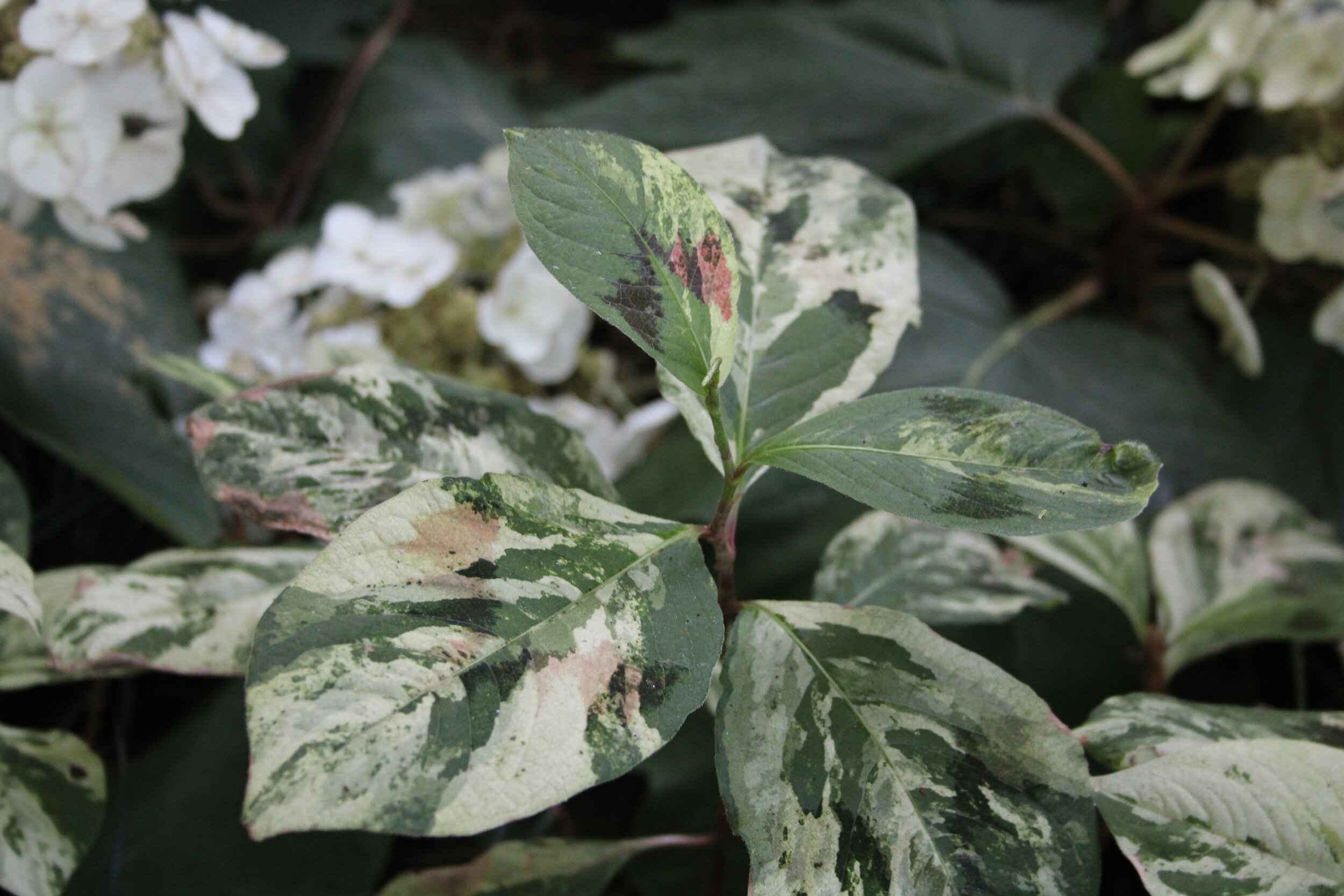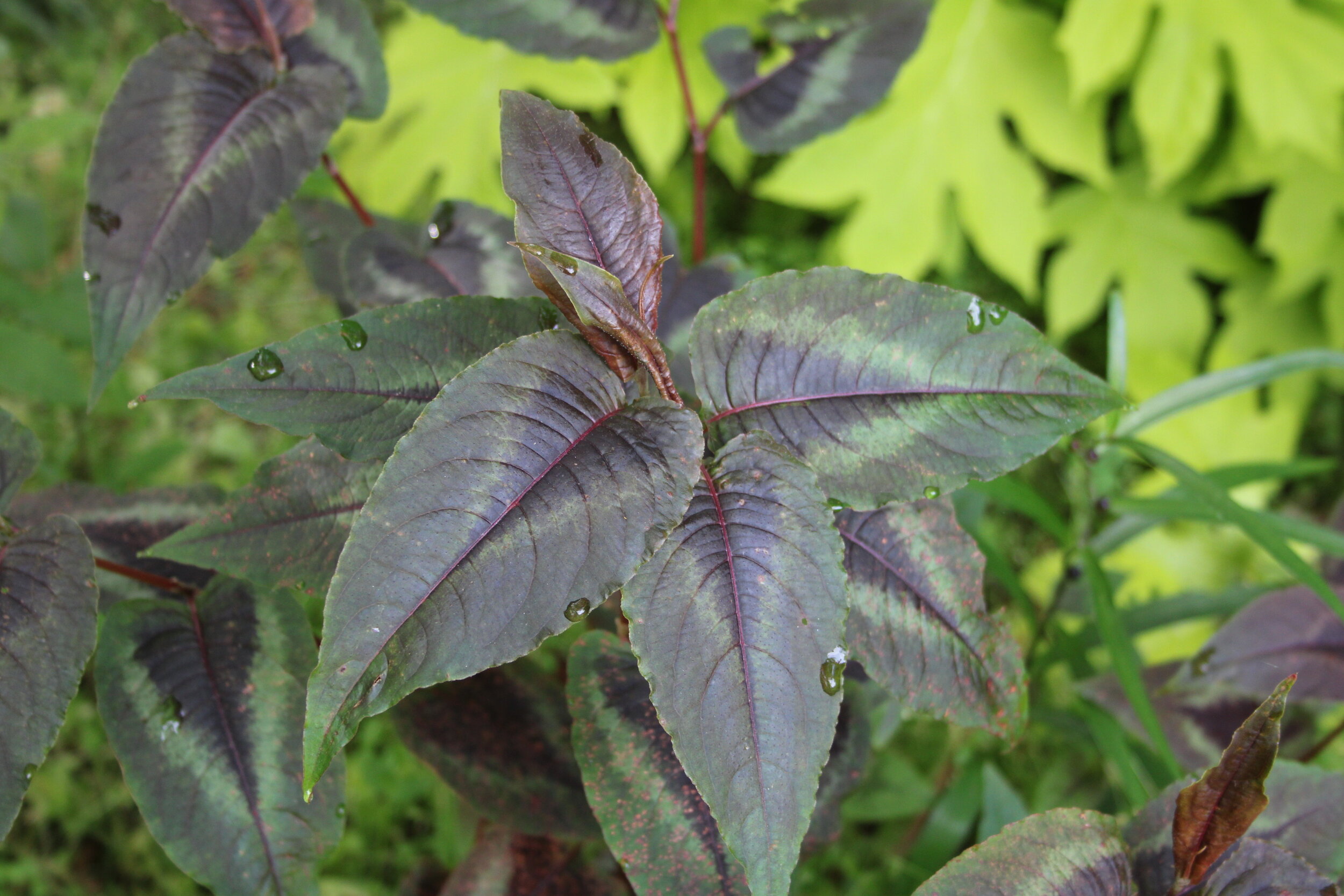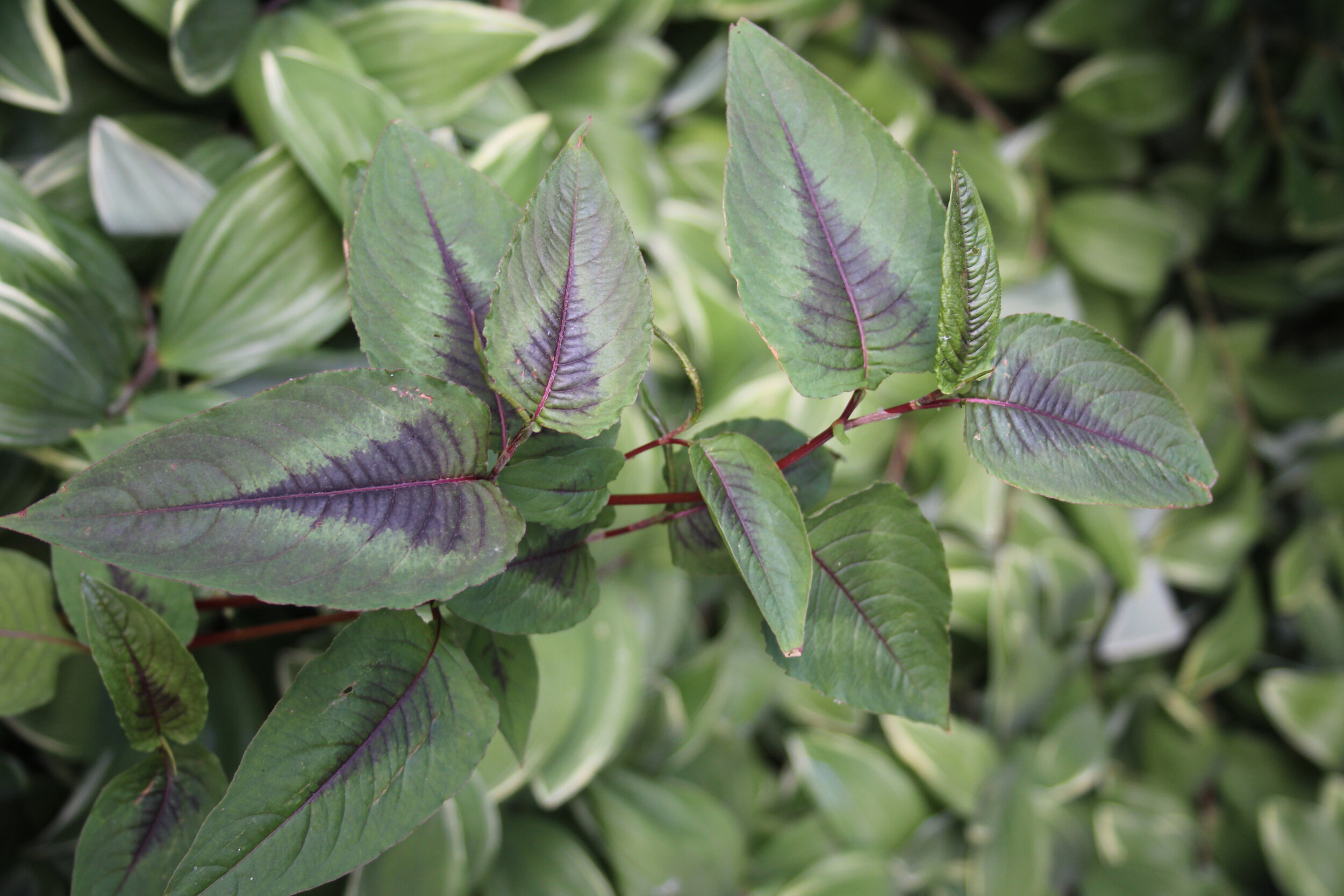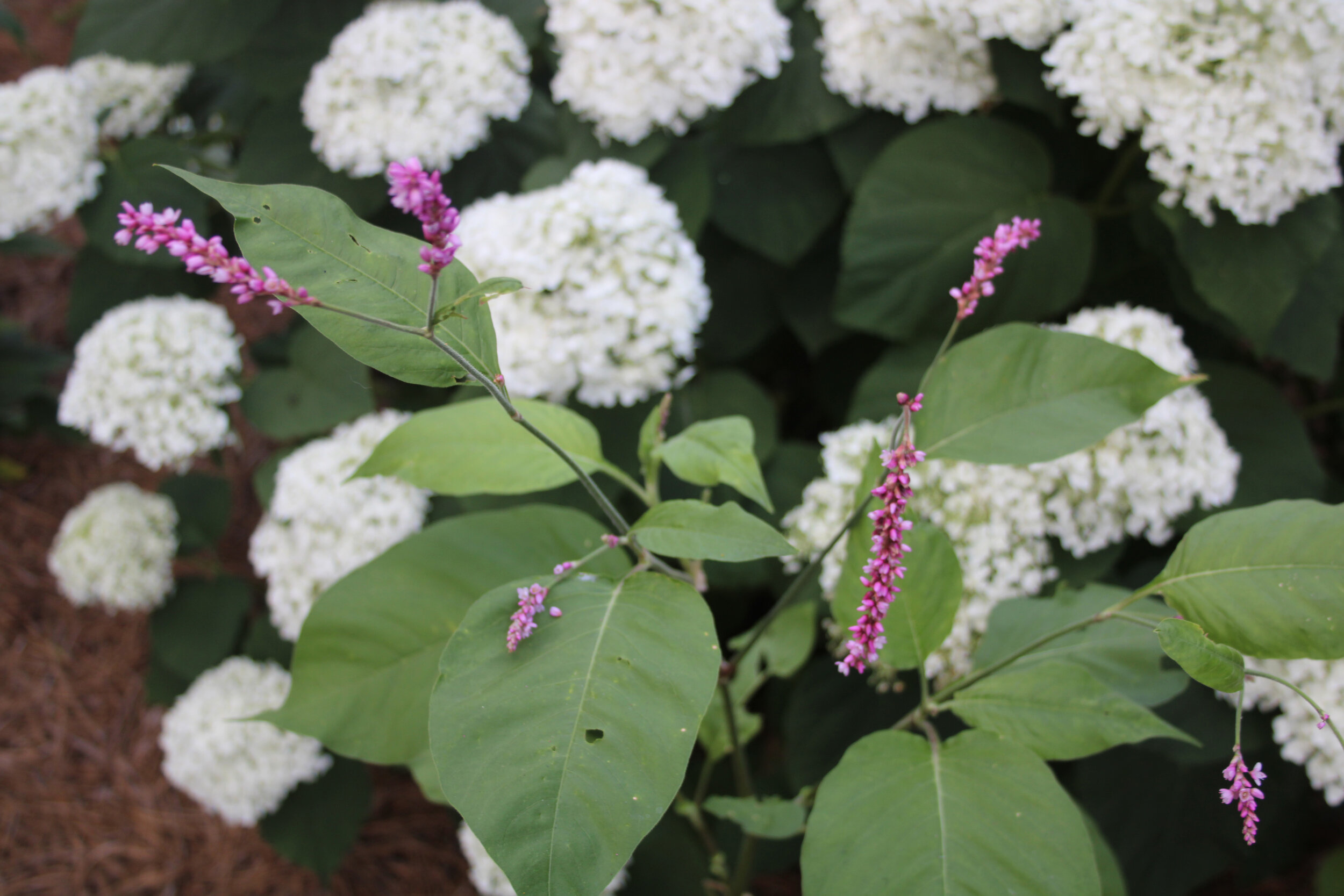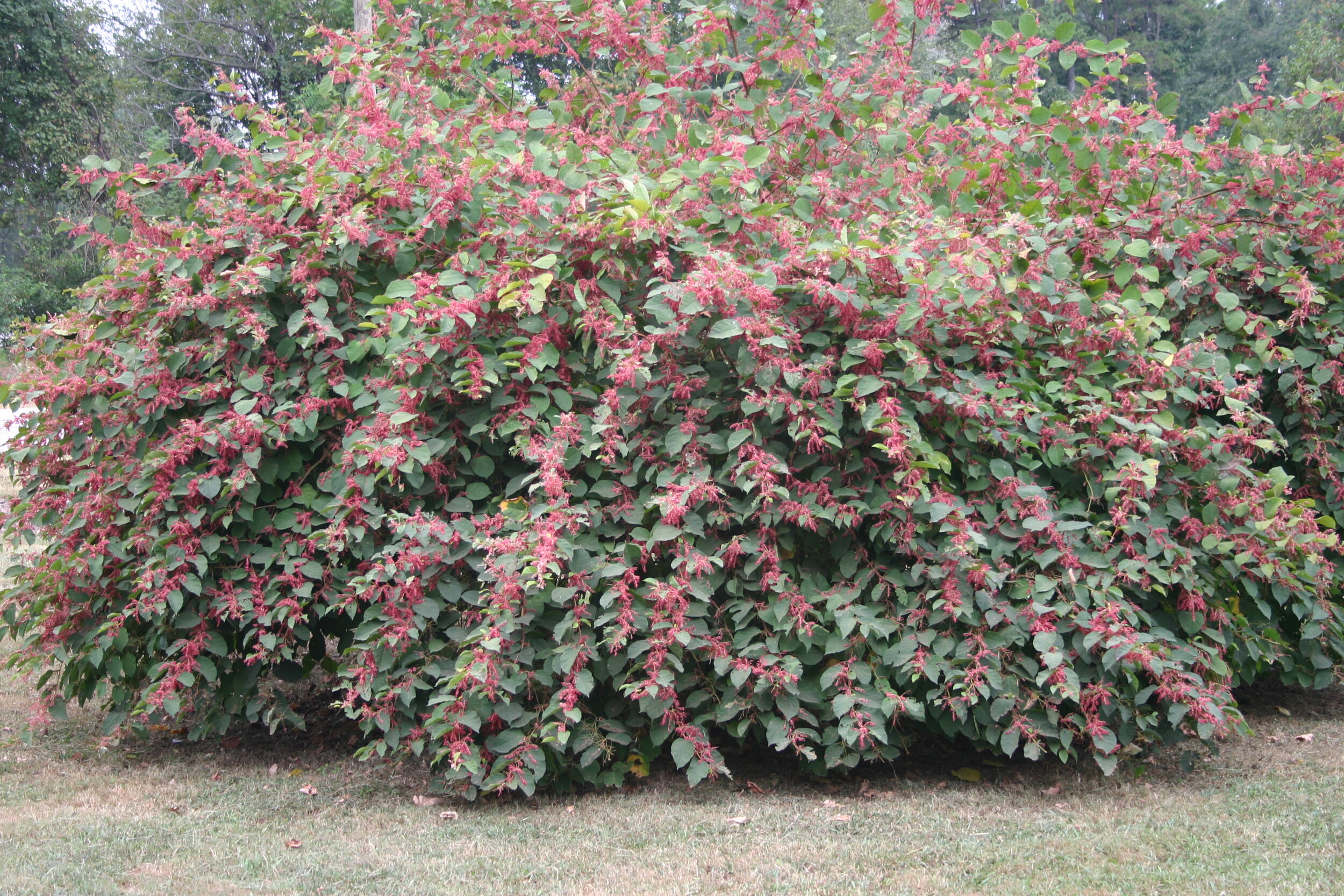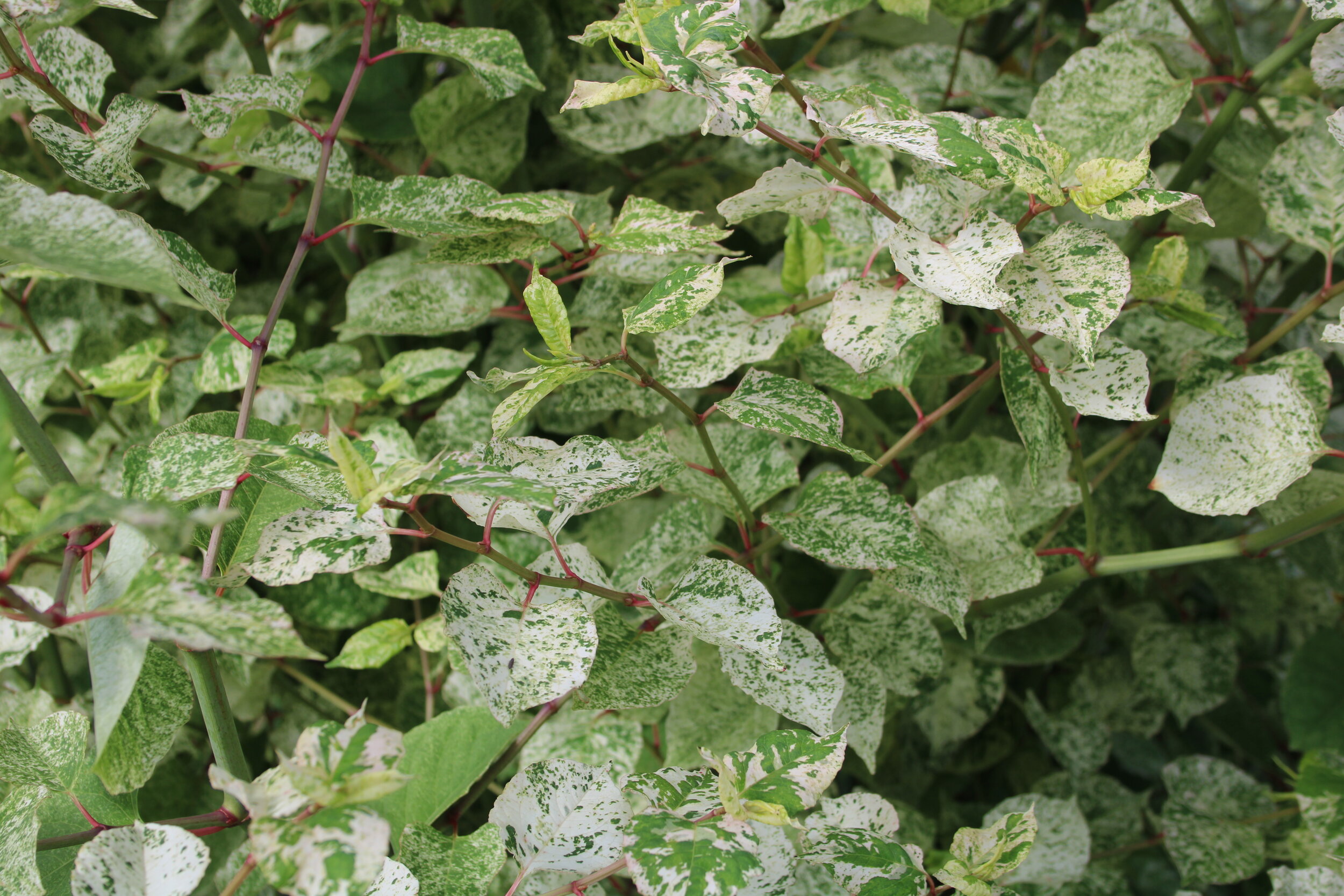My apologies, readers. Yesterday’s blog contained an error in the plant photo identification. This is the corrected version. Sorry!
If you are looking for a low-maintenance plant with attractive foliage that will fill a shady area quickly, look no further than the Persicarias. Persicaria (pronounced per-sih-KAR-ee-uh) genus has a reputation for invasiveness but there is at least one member of the genus that is well-behaved. The common name, Knotweed, does not lend appeal. There are two species worthy of consideration.
Persicaria microcephala ‘Red Dragon’ leaves are burgundy marked with a vee-shaped shield. It has tiny white (sterile) flowers, but is grown for the lovely foliage. Unlike some of its cousins, Red Dragon has a clumping habit. It does not spread underground by stolons. It will, however, root if one of the stems rests atop soil. I have not encountered this, but a peony support or modified tomato cage would ensure it does not.
Persicaria virginiana ‘Painter’s Palette’ brightens a shady area with pale yellow-to-cream foliage marked with green, pink, dark green and burgundy variegations. It is sometimes identified as Tovara virginiana. Painter’s Palette does spread by underground runners, so take great care to ensure that it does not extend into undesired areas. It produces skinny stems with tiny red flowers. These are attractive when seen up close, but are not particularly impressive.
Both Red Dragon and Painter’s Palette will reach 24 inches in height. They are low-maintenance, tolerating just about any soil and limited drought, though they thrive in partial shade with regular irrigation. Consider them as an alternative to Hosta. Because the beauty of these plants is in their foliage rather than blooms, they provide a much longer season of appeal than flowering plants. Although Persicarias are in the same family as buckwheat, they are not edible. Both species die to the ground in winter and return reliably in zones 6-8, maybe wider. In the Mary Snoddy garden, deer nibble on Red Dragon while they ignore the adjacent planting of Painter’s Palette. I don’t know why. I have given up trying to determine why certain plants are deer fodder.
Even though it is not perennial and it is not for shade, another Persicaria that deserves an honorable mention is Persicaria orientale. Its common name, Kiss-Me-Over-The-Garden-Gate, lured me into planting it. Unlike the two mentioned above, Kiss-Me is an annual. It is grown from seed in full sun. It will not transplant, so must be started directly in the ground. It reseeds, so an initial success is usually followed by a reappearance year after year. The Japanese Beetles love it as much as I do. By late summer, the leaves are tattered, so I have let this one slip from the Snoddy garden.
Please do not confuse the above Knotweeds with Mexican Bamboo, a thug also known as Japanese Knotweed. Now listed as Polygonum cuspidatum, it has moved in and out of several genus, including Fallopia, Reynoutria and Otatea. Mexican Bamboo is invasive everywhere. Once established, it is darn near impossible to eradicate. I set a clump on fire numerous times before I finally caved and treated it with nasty herbicides. Even then, it required multiple treatments to kill it. Several years ago, a normally reliable catalog company sold a variegated form that they said would not spread. It was beautiful; I was seduced. They were wrong. It spreads invasively, albeit a tiny bit slower than the non-variegated variety. DO NOT plant Mexican Bamboo. Newsweek magazine ran an article in July, 2014 entitled “Japanese Knotweed: The Invasive Plant That Eats the Value of Your Home.” I rest my case.
